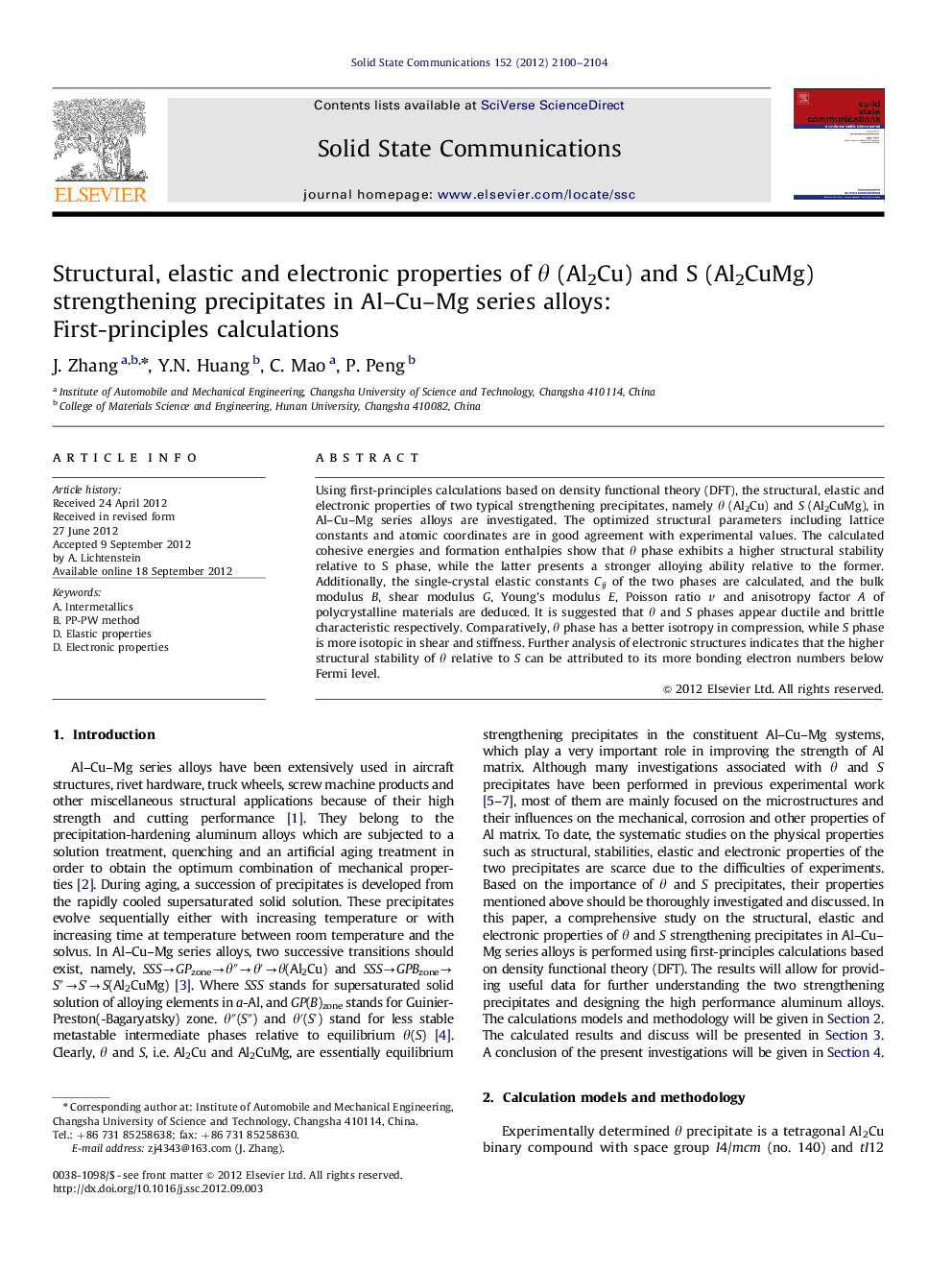| Article ID | Journal | Published Year | Pages | File Type |
|---|---|---|---|---|
| 1592713 | Solid State Communications | 2012 | 5 Pages |
Using first-principles calculations based on density functional theory (DFT), the structural, elastic and electronic properties of two typical strengthening precipitates, namely θ (Al2Cu) and S (Al2CuMg), in Al–Cu–Mg series alloys are investigated. The optimized structural parameters including lattice constants and atomic coordinates are in good agreement with experimental values. The calculated cohesive energies and formation enthalpies show that θ phase exhibits a higher structural stability relative to S phase, while the latter presents a stronger alloying ability relative to the former. Additionally, the single-crystal elastic constants Cij of the two phases are calculated, and the bulk modulus B, shear modulus G, Young's modulus E, Poisson ratio v and anisotropy factor A of polycrystalline materials are deduced. It is suggested that θ and S phases appear ductile and brittle characteristic respectively. Comparatively, θ phase has a better isotropy in compression, while S phase is more isotopic in shear and stiffness. Further analysis of electronic structures indicates that the higher structural stability of θ relative to S can be attributed to its more bonding electron numbers below Fermi level.
► θ has a higher structural stability relative to S. ► S presents a stronger alloying ability relative to θ. ► θ and S exhibit ductile and brittle characteristic, respectively. ► θ is more isotopic in compression, while S is more isotopic in shear and stiffness. ► The more bonding electron numbers below EF of θ explain its higher stability.
